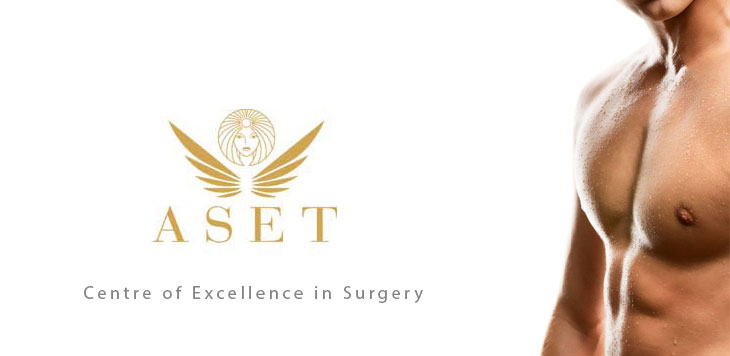
Gynaecomastia is a common condition whereby males develop breast tissue due to an imbalance of estrogen levels, or by gaining weight. While it is not a life-threatening ailment, it can often cause discomfort or low self-esteem.
For those seeking to reduce the amount of breast tissue or skin in the area, male breast reduction surgery is an option.
Our Consultant Plastic Surgeons are members of the British Association of Aesthetic Plastic Surgeons (BAAPS), the British Association of Plastic, Reconstructive and Aesthetic Surgeons (BAPRAS) and International Society of Aesthetic Plastic Surgeons (ISAPS) and all have a variety of professional qualifications.

Male breast reduction surgery depends on the individual. If excess breast tissue is present, it may be best to surgically remove it, but if there are fatty deposits, it could be that you are better suited to liposuction. On occasion, the two are carried out simultaneously.
During your consultation, you will receive a thorough examination by one of our surgeons, who will determine the best option for you.
Read on below for more information about both options.
Ast ASET Hospital, we use either power assisted liposuction or micro-liposuction.
This form of surgery is usually carried out under general anaesthetic or local anaesthetic. Once under sedation or anaesthetic, the surgeon will inject a fluid mixture containing a salt solution, local anaesthetic and adrenaline into the fatty area, which is designed to reduce bleeding, bruising and swelling. It also makes it easier to remove fat cells.
Next, a small puncture will be made in the skin on the chest and a cannula will be inserted. The cannula is then attached to a vacuum pump or syringe and will be moved in different angles to successfully suck out the fat and fluid.
If the area is larger and requires it, there may be additional punctures made to the skin to allow access to all the fatty deposits. Your surgeon will discuss this before surgery, though.
Following liposuction, you will be fitted with an elasticated support garment to help reduce swelling and mould your skin to the new shape.
While it may well be a day case, most liposuction procedures require an overnight stay.
If you require surgical excision you will be placed under general anaesthetic, but in some cases, sedation and local anaesthetic.
The breast is made up of two main components, glandular tissue (firm and dense) and fatty tissue (soft). The ratio of glandular to fatty tissue in any breast varies from individual to individual and in gynaecomastia there may be an excess of both. If there is predominantly a diffuse fatty enlargement of the breast, liposuction is the usual treatment.
If excess glandular tissue is the primary cause of breast enlargement, it may need to be cut out with a scalpel. This will leave a scar, usually around the nipple edge. This excision can be performed alone or in conjunction with liposuction. Major reductions that involve the removal of a significant amount of tissue and skin may require larger incisions that result in more obvious scars.
If you are suitable for liposuction, very small incisions are made around the are on the chest, which can sometimes lead to scarring.
As with any surgery, potential risks include haematoma, infection, wide or lumpy scars, persistent pain, asymmetry, loss of sensation, bruising and bleeding.
*Individual results may vary.
Your well being is our number one priority, we offer a comprehensive and personalised aftercare package, all included in your treatment.
After you are discharged, will we give you post-operative care instructions and you will have 24-hour access to trained staff who will be on hand to advise you should you have any questions or concerns.
Following male breast reduction surgery you may need to wear a support garment. Your dressings will be removed approximately 7-10 days after your surgery. The surgeon who performed your surgery will see you after 6 weeks for a follow-up assessment. It is vital that you attend all necessary post-operative appointments. It is recommended that you take two to three weeks off work and avoid physical exercise for six weeks. These follow-ups are standard and will be provided at no extra cost.
Ready to learn more about a Male Breast Reduction Surgery? To request your consultation, fill out the form on the side of this page or call our practice at 0151 426 4777. Aset Hospital is based in Liverpool, Merseyside UK and serves national and international clients.